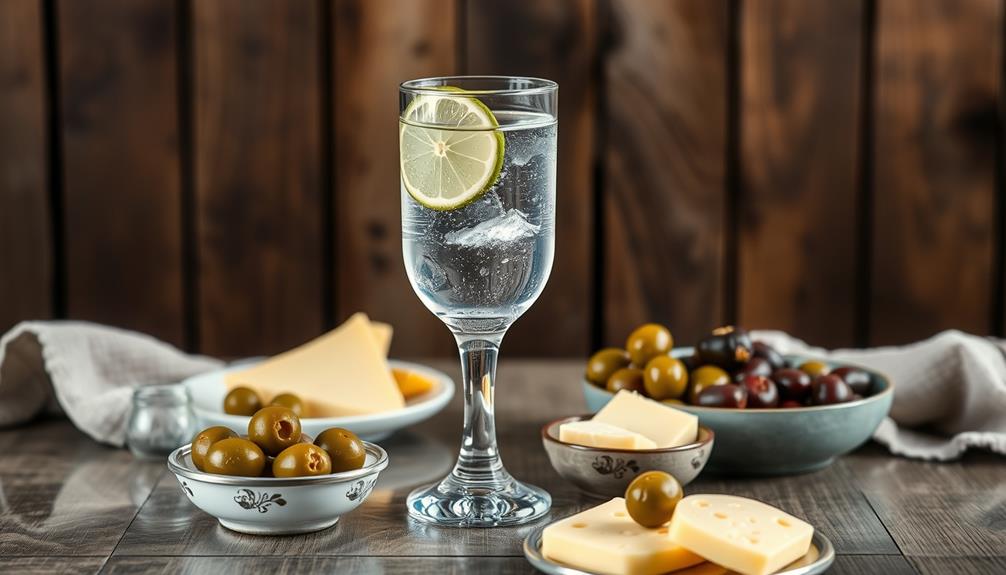To be on a keto diet, you need to focus on high-fat and low-carb foods. Aim for about 70% fat, 20% protein, and just 10% carbs in your meals. Include foods like avocados, nuts, fatty meats, and low-carb vegetables, while avoiding sugary items, grains, and most fruits. Prepare your meals in advance and track your macronutrient intake to stay on track. Hydrate well to manage initial side effects like fatigue. With the right approach, you'll not only lose weight but also enjoy numerous health benefits. There's plenty more to explore to optimize your keto journey. For vegetarians, it may require a bit more careful planning to get enough protein and healthy fats on a keto diet. Consider adding sources like tofu, tempeh, and eggs to your meals, and incorporating higher-fat plant foods like coconut and olives. Remember to still track your macronutrients to ensure you’re staying within the recommended ratios for a keto diet. There are plenty of delicious and nutritious options out there, so don’t be afraid to get creative and explore new recipes as you navigate the exciting world of keto diet tips for vegetarians.
Key Takeaways
- Follow a macronutrient ratio of 70% fat, 20% protein, and 10% carbs to achieve and maintain ketosis.
- Include high-fat foods like avocados, fatty meats, and full-fat dairy while avoiding sugary foods and grains.
- Stay hydrated and increase electrolyte intake to manage initial side effects known as "keto flu."
- Prepare meals in advance and track your food intake using apps to stay on course with your diet.
- Seek support through online groups and professional consultations to enhance motivation and adherence to the ketogenic lifestyle.
Understanding the Keto Diet

Understanding the Keto Diet is essential for anyone looking to shift their eating habits effectively. The ketogenic diet is a high-fat diet that typically consists of about 70% fat, 20% protein, and just 10% carbohydrates. By limiting your carbohydrate intake to around 20-50 grams per day, you can induce a metabolic state called ketosis.
In ketosis, your body switches its primary energy source from glucose to ketones produced from fat, which can assist with weight loss and offer various health benefits. Additionally, incorporating nutrient-dense foods like leafy greens and avocados can further enhance the health benefits of the diet, as these foods are low in carbohydrates and high in essential nutrients such as fiber and antioxidants, which are beneficial for overall health rich in antioxidants.
There are different types of keto diets, including the Standard Ketogenic Diet (SKD), which is the most researched. Other variations, such as the Cyclical and Targeted Ketogenic Diets, are tailored for specific needs, like those of athletes.
While starting the keto diet, you might experience initial side effects known as the "keto flu." These symptoms can include fatigue and headaches as your body adjusts to burning fat for energy instead of carbohydrates.
Essential Foods to Include

To succeed on a keto diet, you need to focus on incorporating high-fat foods, low-carb vegetables, and protein sources.
Paying attention to your body's reactions and adjusting accordingly can enhance your experience, as well as understanding the potential side effects of dietary changes such as those seen with cold medications overview.
Think avocados, fatty cuts of meat, and nutrient-rich greens that keep your carb count low while fueling your body.
High-Fat Food Options
When you commence a keto diet, incorporating high-fat food options is essential for maintaining ketosis and reaping the diet's benefits. By focusing on healthy fats, you'll fuel your body effectively while minimizing carbs.
Additionally, consider including essential oils for wellness that can complement your diet and overall health. Here are some great high-fat foods to include:
- Avocados: Packed with healthy monounsaturated fats and fiber, avocados are an excellent choice for your ketogenic diet.
- Fatty cuts of meat: Ribeye and pork belly provide high levels of saturated fats, necessary for achieving the desired fat ratio.
- Full-fat dairy: Cheese, heavy cream, and butter are rich in fats and low in carbs, adding flavor and essential nutrients.
- Nuts and seeds: Macadamia nuts and chia seeds are perfect snacks, offering a good source of healthy fats, fiber, and protein.
In addition to these, don't forget to use oils like olive oil and coconut oil for cooking or salad dressings, as they provide concentrated fat sources while keeping your carb intake low.
Low-Carb Vegetables
Incorporating low-carb vegetables into your keto diet is crucial for maintaining ketosis while ensuring you get essential nutrients. These vegetables typically contain fewer than 5 grams of net carbs per serving, making them ideal for your ketogenic diet.
Leafy greens like spinach, kale, and arugula are excellent choices, providing high fiber content along with a wealth of vitamins and minerals with minimal carbohydrates. In addition, including a variety of these vegetables can enhance your overall health, supporting lifestyle for longevity and well-being.
Cruciferous vegetables, such as broccoli, cauliflower, and Brussels sprouts, are another fantastic option. They're not only low in carbs but also rich in antioxidants, which promote overall health.
Zucchini and bell peppers serve as versatile low-carb options, easily fitting into various dishes while contributing flavor and texture without greatly impacting your carb intake.
Don't forget about avocado, a unique low-carb fruit that's packed with healthy fats, fiber, and essential nutrients. Including these low-carb vegetables in your meals can help you stay within your carb limits while ensuring you get the nutrients your body needs.
Protein Sources
Choosing the right protein sources is vital for a successful keto diet. You'll want to focus on high-fat, low-carbohydrate options that not only provide necessary amino acids but also support your overall health.
Here are a few key protein sources to include:
- Fatty cuts of meat (beef, pork, lamb)
- Fatty fish (salmon, mackerel, sardines)
- Full-fat cheeses and Greek yogurt
- Plant-based protein options (tofu, tempeh)
Incorporating these protein sources into your meals can help you meet your macro goals. Fatty cuts of meat are excellent for their high-fat content and necessary amino acids.
Eggs are also versatile and nutrient-rich, making them great for breakfast or snacks.
Don't forget about fatty fish; they're packed with protein and omega-3 fatty acids, essential for heart health.
Dairy products like full-fat cheeses and Greek yogurt provide healthy fats while keeping carbohydrates low.
If you prefer plant-based options, just make sure you pick varieties that fit within the carb limits of your low-carb diet.
With these protein sources, you'll be well on your way to achieving keto success!
Foods to Avoid on Keto

Staying on track with a keto diet means steering clear of certain foods that can sabotage your efforts. First off, you need to avoid sugary foods like soda, fruit juices, cakes, and candies, as they can exceed your daily carb limit and disrupt ketosis.
Additionally, understanding your credit score can help you make informed financial decisions as you invest in your health journey. Grains to eliminate include wheat, rice, and pasta, which are all high in carbohydrates. Keeping your low carb intake to about 20-50 grams per day is crucial for maintaining ketosis.
When it comes to fruits to avoid, most are too high in sugar, with the exception of small portions of berries. Starchy vegetables, such as potatoes and carrots, also aren't suitable for your ketogenic diet.
Although beans and legumes have health benefits, they contain significant carbohydrates and should be limited or avoided entirely. Processed snacks are another pitfall; chips, cookies, and ice cream can lead to unintentional carb consumption.
It's essential to steer clear of these high-carb options to guarantee the effectiveness of your keto diet. By eliminating these foods, you'll be better positioned to reach your goals and maintain ketosis.
Meal Planning Strategies

Planning your meals ahead is a game changer for sticking to a keto diet. By strategically planning your meals, you can guarantee you stay within your daily carbohydrate limit of 20-50 grams while enjoying delicious high-fat foods. Incorporating coffee into your meal planning can also provide a boost in energy, especially when prepared with mindful ingredients, such as healthy fats in coffee.
Here are some effective meal planning strategies to take into account:
- Cook in bulk using meal prep techniques to save time and reduce temptation.
- Include a variety of low-carb vegetables and moderate protein sources in your meals.
- Keep a food diary or use apps to track your macronutrient intake.
- Prepare keto-friendly snacks for social situations to help you stick to your dietary goals.
Focus on meals that emphasize healthy fats like avocados, fatty fish, and nuts. Incorporate different recipes to avoid monotony and guarantee you meet the desired ketogenic ratio of approximately 70% fat, 20% protein, and 10% carbs.
With a solid meal plan, you can navigate your day with confidence, making it easier to resist high-carb alternatives. By being prepared, you'll not only simplify your cooking but also have more control over your food choices, helping you achieve long-term success on your keto journey.
Health Benefits of Keto

The ketogenic diet offers a range of health benefits that can transform your overall well-being. One of the most notable advantages is significant weight loss; studies show you might lose an average of 2 pounds more than with traditional low-fat diets within the first few months. Additionally, this diet can lead to improved blood sugar control, with around 60% of individuals with type 2 diabetes experiencing a reversal of their condition.
Another key benefit is enhanced mental clarity and energy levels. Your brain utilizes ketones—produced during ketosis—as a more efficient energy source than glucose. This can lead to improved focus and productivity throughout the day.
Furthermore, the ketogenic diet has shown promise in reducing seizure frequency in drug-resistant epilepsy patients, leading to substantial improvements in their quality of life. Finally, it offers cardiovascular benefits, including reduced triglycerides and increased HDL cholesterol, which contribute to better heart health.
| Health Benefit | Description |
|---|---|
| Weight Loss | Average of 2 pounds more lost than traditional diets. |
| Improved Blood Sugar | 60% of type 2 diabetes patients experience reversal. |
| Cardiovascular Benefits | Reduced triglycerides and increased HDL cholesterol. |
Managing Side Effects

While the ketogenic diet offers numerous health benefits, some people may encounter side effects as their bodies adjust to this new way of eating. To effectively manage these side effects, consider the following: Incorporate gentle stretching before bedtime to relax muscles, which can help reduce discomfort during this shift sleep better.
- Stay hydrated to combat fatigue and headaches.
- Increase your electrolyte intake, especially sodium, potassium, and magnesium.
- Gradually reduce your carbohydrate intake to ease the shift.
- Incorporate high-fiber, non-starchy vegetables to support digestive health.
During the shift period, you might experience "keto flu," which can include symptoms like fatigue, headache, nausea, and cramping. These typically resolve within a few days to a week.
To alleviate these symptoms, focus on hydration and electrolytes since ketosis increases water and electrolyte excretion from your body.
If you face digestive issues, make sure you're consuming adequate fiber from non-starchy vegetables, while also maintaining a healthy fat intake to support digestion.
Long-term Sustainability

Sustaining the ketogenic diet over the long term can be a formidable challenge for many. You might find yourself craving carbohydrates and struggling with strict adherence as time goes on. While the initial weight loss can be impressive, research shows that many people regain weight once they revert to regular eating patterns.
That's why developing a balanced post-keto diet is essential. Understanding the importance of financial considerations for elderly care can also play a role in maintaining a healthy lifestyle as you navigate dietary changes.
To achieve long-term sustainability, focus on incorporating whole foods and balancing your macronutrients. A diet rich in healthy fats, proteins, and a moderate amount of carbohydrates can help maintain weight loss and promote overall health. Continuous nutrition education is key; staying informed about your dietary choices supports long-term health and effective weight management.
Additionally, don't underestimate the power of social support. Surrounding yourself with like-minded individuals can boost your commitment to a healthy lifestyle.
Pair this with regular physical activity, which not only aids weight management but also enhances your overall well-being. By creating a supportive environment and adopting a balanced approach to eating, you can navigate the challenges of long-term sustainability on your keto journey.
Resources for Success

Success in your ketogenic journey relies heavily on the right resources at your disposal. To navigate the ketogenic diet effectively, consider utilizing a variety of tools and platforms that will support your health goals and keep you on track.
Regular health screenings, such as mammograms, can be an important part of maintaining overall health while following any diet, including keto. Understanding mammography guidelines can aid in making informed decisions about your health as you progress on your dietary journey.
- Expert Guidelines: Check out reputable sources like Cleveland Clinic, Mayo Clinic, and Johns Hopkins Medicine for insights on the ketogenic diet.
- Recipes & Meal Plans: Access cookbooks and websites dedicated to ketogenic recipes, ensuring you maintain variety while adhering to macronutrient intake.
- Support Groups: Join online forums where individuals share experiences, tips, and motivation, providing you with a community to lean on.
- Health Tracking Tools: Use calculators to monitor your macronutrient intake and progress, keeping you within the limits necessary for effective ketosis.
Don't forget to seek professional consultation, especially if you have pre-existing health conditions. This step helps tailor the ketogenic diet to your unique health goals, ensuring a safe and effective implementation.
With these resources at your fingertips, you'll be well-equipped to make your ketogenic journey a successful one.
Frequently Asked Questions
How Do I Start Going on Keto?
To start going on keto, greatly reduce your carb intake, focus on high-fat foods, and plan your meals. Stay hydrated and monitor your electrolytes to support your body during this shift. Tracking progress can help too.
What Are the Basic Rules for Keto?
Ever wondered how to transform your energy levels? To follow keto, limit carbs to 20-50 grams daily, focus on high-fat foods, and balance your macronutrients to achieve and maintain ketosis effectively. Stay hydrated!
What Foods Do You Eat on a Keto Diet?
You'll eat high-fat foods like avocados, nuts, and fatty meats, while enjoying low-carb vegetables and full-fat dairy. Avoid grains, sugary items, and most fruits, sticking to low-sugar options like berries to maintain your carb limits.
What Foods Are Not Allowed on Keto?
Picture a garden of vibrant fruits and grains, but beware! You'll need to avoid sugary treats, grains, most fruits, starchy veggies, and legumes. They'll sneak carbs into your diet, derailing your keto journey.
Conclusion
In summary, embracing the keto diet can transform your life in ways you never imagined. By understanding the essentials, planning your meals wisely, and staying committed, you'll open up a world of energy and vibrancy. Just remember, the key to success lies in consistency and adaptability. With the right approach, you'll soar to new heights of health and well-being. So grab those avocados and bacon, and plunge into this delicious journey towards a healthier you!








